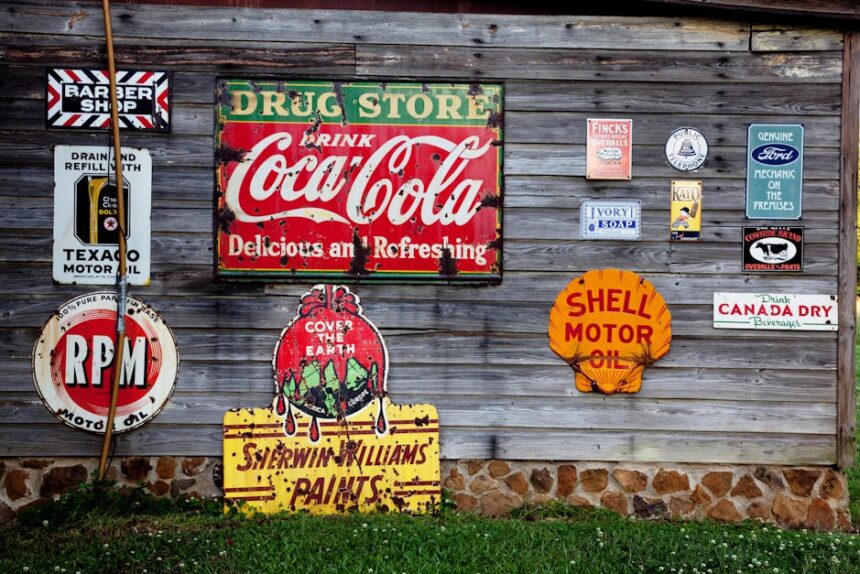Optimizing Twitter Ads for efficiency fundamentally hinges on a meticulously crafted campaign structure. This foundational aspect dictates how budgets are allocated, audiences are targeted, and creative assets are deployed, directly impacting return on ad spend (ROAS). Without a logical, strategic framework, even the most compelling ad copy or eye-catching visuals can falter, leading to wasted ad spend and missed opportunities. The Twitter Ads platform, like most advertising ecosystems, operates on a hierarchical structure: Campaigns, Ad Groups, and Tweets (or Ads). Understanding and leveraging each level’s unique capabilities is paramount for maximizing efficiency.
Understanding the Twitter Ads Hierarchy for Efficiency
The Twitter Ads architecture is designed to provide advertisers with granular control over their campaigns, from high-level objectives down to individual creative elements. Each level serves a distinct purpose, and efficient campaign management requires a clear understanding of how these levels interact and contribute to overall performance.
-
Campaign Level: The Strategic Blueprint
At the apex of the hierarchy is the campaign. This is where the overarching strategic goals are defined. Every campaign must be aligned with a specific business objective, such as driving website traffic, increasing brand awareness, generating leads, or boosting app installs. The campaign level is also where the primary budget is set, either as a total budget for the campaign’s duration or a daily budget. Furthermore, campaign-level settings dictate the campaign’s flight dates (start and end times) and the overall bidding strategy (e.g., automatic bid, target cost, or max bid). A well-defined campaign sets the stage, ensuring all subsequent efforts are channeled towards a singular, measurable outcome. Misaligning the campaign objective with the desired business outcome is a common pitfall that immediately undermines efficiency, as Twitter’s algorithm will optimize delivery for the chosen objective, even if it’s not the advertiser’s true priority. For instance, selecting “Engagements” when the real goal is “Website Conversions” will lead to many likes and retweets but few clicks to the conversion page, resulting in inefficient spend from a conversion perspective. -
Ad Group Level: The Tactical Execution Unit
Nested within campaigns are ad groups. Ad groups represent the tactical execution units where specific targeting parameters, bidding strategies, and ad placements are defined. This is the layer where audience segmentation becomes critical for efficiency. Within a single campaign, multiple ad groups can be created to target different audience segments, test various bidding approaches, or experiment with diverse ad placements. For example, a campaign focused on “Website Conversions” might have one ad group targeting existing website visitors (retargeting), another targeting users interested in a specific topic, and a third targeting followers of competitor accounts. Each ad group can have its own budget allocation, allowing for flexible spending across different segments based on their performance potential. The ad group level is where the “who” and “how much” of advertising are precisely controlled, making it a pivotal point for optimizing ad delivery and controlling costs per action. Inefficient ad group structuring often leads to audience overlap, budget cannibalization, and an inability to accurately attribute performance to specific targeting strategies. -
Tweet (Ad) Level: The Creative Hook
At the base of the hierarchy are the individual Tweets, or ads themselves. These are the creative assets that users actually see on their timelines. Each ad group can contain multiple Tweets, enabling advertisers to test different ad copy, visuals (images, videos, carousels), calls-to-action (CTAs), and landing page experiences. The relevance and appeal of the creative directly impact ad engagement, click-through rates (CTR), and ultimately, conversion rates. Efficient ad management at this level involves continuous A/B testing of creatives to identify the most effective combinations for each audience segment. A strong campaign and ad group structure provides the ideal environment for these creative tests, ensuring that variations are tested against the correct audience and objective. Neglecting creative optimization, even with a perfect campaign and ad group setup, will lead to diminishing returns, as irrelevant or unengaging ads will simply fail to capture user attention, regardless of how well they are targeted. -
Why a Structured Hierarchy Matters for Efficiency
The inherent benefit of this layered structure is the ability to isolate and analyze performance at each level. This isolation is crucial for diagnostics and optimization. If a campaign is underperforming, one can systematically drill down: Is the overall objective misaligned? Is a specific ad group failing due to poor targeting or an unrealistic bid? Or are the creatives themselves not resonating with the audience? Without a clear structure, diagnosing issues becomes a chaotic exercise of trial and error, leading to prolonged periods of inefficient spending. A well-structured campaign empowers advertisers to identify what’s working and what’s not, allowing for rapid iteration, budget reallocation, and continuous improvement, which are all hallmarks of efficient ad management.
Campaign Level Best Practices: Setting the Strategic Foundation
The campaign level establishes the strategic framework for all subsequent advertising efforts on Twitter. Precision at this stage prevents downstream inefficiencies.
-
Objective-Driven Campaign Creation:
The first and most critical decision at the campaign level is selecting the correct campaign objective. Twitter offers a range of objectives, each designed to optimize for a specific outcome and align with different stages of the marketing funnel.- Awareness: Objectives like “Reach,” “Video Views,” and “Pre-roll Views” are designed to maximize impressions and visibility. Use these when the primary goal is to get your message in front of the largest possible relevant audience, increase brand recognition, or drive top-of-funnel engagement. Efficiency here means reaching the most unique users at the lowest possible cost per thousand impressions (CPM) or cost per view (CPV).
- Consideration: Objectives such as “App Installs,” “Website Traffic,” “Engagements,” and “Followers” focus on driving specific actions that indicate user interest or consideration. “Website Traffic” aims for clicks to your site, “Engagements” for likes, retweets, and replies, and “App Installs” for driving downloads. Efficiency is measured by cost per click (CPC), cost per engagement (CPE), or cost per install (CPI). It’s crucial not to conflate engagements with actual business value if the goal is further down the funnel. For instance, running an “Engagements” campaign to drive sales might get a lot of likes but few clicks to the product page.
- Conversion: Objectives like “Website Conversions” and “App Re-engagements” are bottom-of-funnel goals, optimized for specific actions on your website (e.g., purchases, sign-ups, lead generation) or within your app. These require the Twitter Pixel or App Tracking to be properly installed and configured. Efficiency here is paramount, measured by cost per conversion (CPA) and ultimately return on ad spend (ROAS).
- Mapping Objectives to Business Goals: It is vital to clearly define your overarching business goal before selecting a Twitter Ads objective. If the business goal is to increase online sales, “Website Conversions” is the appropriate objective. If it’s to build a community, “Followers” might be suitable. Mismatched objectives lead to Twitter’s algorithm optimizing for the wrong outcome, wasting budget on actions that don’t contribute to the desired business result.
- The Impact of Misaligned Objectives on Spend: This is a common pitfall. For example, a business aiming to generate leads might select “Website Traffic” thinking more clicks will lead to more leads. However, Twitter’s algorithm for “Website Traffic” prioritizes users most likely to click, not necessarily those most likely to convert. Conversely, an “Optimized for Conversions” campaign might initially generate fewer clicks but will target users with a higher propensity to complete a desired action, leading to a much lower cost per lead or sale in the long run, thereby optimizing for true efficiency.
-
Budget Allocation and Management:
Effective budget management at the campaign level ensures spend is controlled and maximized for performance.- Total Budget vs. Daily Budget: A “Total Budget” is ideal for campaigns with a fixed lifespan or a specific event, ensuring the entire budget is spent over the campaign’s duration without exceeding it. A “Daily Budget” provides more flexibility for ongoing campaigns, allowing for consistent daily spend. For efficiency, determine which budget type aligns best with your campaign’s nature. For evergreen campaigns, daily budgets facilitate continuous optimization and prevent budget exhaustion before the campaign’s intended end date.
- Standard vs. Accelerated Delivery: “Standard Delivery” paces your budget evenly throughout the day, which is generally recommended for most campaigns as it optimizes for cost efficiency over time. “Accelerated Delivery” aims to spend your budget as quickly as possible, potentially leading to higher costs per action but ensuring maximum reach or impressions in a short timeframe. Use accelerated delivery sparingly, typically for time-sensitive promotions or trending topics where rapid visibility is crucial, but be aware of its potential impact on cost efficiency.
- Portfolio Budgeting Across Campaigns: For advertisers running multiple campaigns, consider a portfolio budgeting approach. This involves setting an overall marketing budget and then dynamically allocating it across campaigns based on their real-time performance and efficiency metrics. Tools within Twitter Ads (or third-party platforms) can sometimes assist with this, but manual oversight is often required to shift funds from underperforming campaigns to those demonstrating higher ROAS.
- Forecasting and Scalability: Before launching, forecast potential costs and outcomes based on historical data or industry benchmarks. As campaigns mature and prove efficient, plan for scalability. This might involve gradually increasing budgets while monitoring cost per action to ensure efficiency isn’t compromised by aggressive scaling. A well-structured campaign allows for controlled scaling, where performance can be maintained even with increased investment.
-
Flight Dates and Scheduling:
Defining when your ads run can significantly impact efficiency, especially for time-sensitive promotions or when targeting audiences active during specific periods.- Defining Campaign Lifespans: Clearly set start and end dates for campaigns. This prevents unintentional overspending and ensures ads run only when relevant. For ongoing, evergreen content, campaigns can be set to run indefinitely, but regular performance reviews are essential.
- Ad Scheduling (Dayparting) for Peak Performance: Twitter Ads allows you to schedule your ads to run only during specific hours of the day or days of the week. Analyze your historical data or audience insights to identify when your target audience is most active and receptive, or when conversions are most likely to occur. For example, a B2B campaign might perform better during weekdays business hours, while a B2C e-commerce campaign might see higher engagement during evenings or weekends. Dayparting prevents spending during low-engagement or low-conversion periods, directly improving efficiency.
-
Campaign Naming Conventions:
While seemingly minor, a consistent and logical naming convention is critical for organizational efficiency, reporting, and analysis.- Importance for Organization and Analysis: Imagine sifting through dozens of campaigns named “Campaign 1,” “Campaign 2,” “New Promo.” It becomes impossible to quickly identify the purpose, target, or performance metrics. A good naming convention acts as a self-documenting system, providing immediate context.
- Recommended Structures (Objective_Target_Format_Date): A commonly recommended structure incorporates key identifiers:
[Objective](e.g.,WCfor Website Conversions,VVfor Video Views,LIfor Lead Gen)[Target Audience/Segment](e.g.,Retargeting,Interests-Tech,CustomList-CRM)[Ad Format/Type](e.g.,Video,Image,Carousel,Text)[Date/Launch Period](e.g.,202310,Q4-Promo)[Geo/Market](e.g.,US,UK-London)- Example:
WC_Retargeting-Buyers_Video_202310_USorLI_Prospects-SaaS_Image_Q4-Promo_Global.
This systematic approach saves countless hours in reporting, troubleshooting, and campaign replication, directly contributing to operational efficiency.
Ad Group Level Best Practices: Refining Targeting and Bid Strategy
The ad group level is where the rubber meets the road. It’s about segmenting your audience precisely and optimizing your bids to reach them effectively, making it a powerful lever for efficiency.
-
Granular Audience Segmentation:
Efficient ad spend comes from showing ads to the right people. Ad groups allow for detailed audience segmentation.- Demographics (Age, Gender, Location): These are fundamental targeting options. Ensure your demographic targeting aligns with your ideal customer profile. For global campaigns, consider creating separate ad groups for different countries or regions to account for cultural nuances and distinct performance metrics. Local targeting for businesses with physical locations can dramatically improve relevance.
- Audience Features (Interests, Follower Look-alikes, Keywords):
- Interests: Twitter categorizes users based on their expressed interests (tweets, followed accounts). Targeting specific interests relevant to your product or service can reach highly receptive audiences. Be specific; “Technology” is broad, “AI & Machine Learning” is more granular.
- Follower Look-alikes: Target users who follow specific accounts (e.g., competitors, industry influencers). This is a powerful way to reach audiences who have already demonstrated an interest in related topics or brands.
- Keywords: Target users who have recently tweeted, engaged with, or searched for specific keywords. This allows for highly contextual and intent-based targeting. Using long-tail keywords can often lead to more qualified traffic at a lower cost.
- Custom Audiences (Retargeting, CRM Uploads, Website Visitors): These are arguably the most efficient audiences due to their higher intent or prior engagement.
- Retargeting: Target users who have previously interacted with your website (via Twitter Pixel), app, or Twitter content. These audiences are warmer and often have significantly higher conversion rates. Create ad groups for different stages of the retargeting funnel (e.g., “all website visitors,” “product page viewers,” “abandoned cart”).
- CRM Uploads: Upload customer email lists or phone numbers to create custom audiences. This is excellent for re-engaging existing customers, cross-selling, upselling, or creating look-alike audiences based on your best customers.
- Website Visitors: Similar to retargeting, these are users who visited specific pages on your website. Segmentation by page visited allows for highly personalized messaging.
- Tailoring Messaging to Segments: The true power of granular segmentation is the ability to serve highly relevant ads. An ad group targeting “abandoned cart” visitors should have messaging focused on completing the purchase, perhaps with a discount. An ad group targeting “new prospects based on interests” should focus on awareness and value proposition. This relevance significantly boosts engagement and conversion rates, improving efficiency.
- The Power of Exclusions: Equally important as targeting is exclusion. Prevent your ads from showing to irrelevant audiences (e.g., existing customers for a new customer acquisition campaign, or users who have already converted). Also, exclude audiences that overlap significantly with another ad group unless there’s a specific A/B testing reason. This reduces wasted impressions and ensures budget isn’t cannibalized between ad groups.
-
Bid Strategy Optimization:
Bidding controls how much you pay for specific actions and directly impacts your campaign’s efficiency.- Automatic Bid vs. Target Cost Bid vs. Max Bid:
- Automatic Bid: Twitter automatically optimizes bids to get the most results for your budget. This is often the easiest option and can be efficient for advertisers new to the platform or those with limited time for manual optimization.
- Target Cost Bid: You set a target cost per result (e.g., cost per click, cost per conversion). Twitter’s algorithm then aims to achieve that average cost. This provides more control and can be highly efficient if you have a clear understanding of your desired CPA. It requires monitoring to ensure the target cost is achievable.
- Max Bid: You set the maximum amount you’re willing to pay per billable action. This gives the most control but can limit reach if your bid is too low or lead to overspending if too high. Max bid is often used by advanced advertisers who have a deep understanding of their audience’s value and competitive landscape.
- Understanding Bid Modifiers: While Twitter Ads typically optimizes bids based on the chosen strategy, understanding the factors that influence the actual bid price (audience competition, ad quality, historical performance) is crucial.
- Bid Caps for Cost Control: Using bid caps, especially with manual bidding, provides a safety net to prevent runaway spending on individual actions. It helps keep your costs within a predefined range, ensuring efficiency.
- Optimizing for Key Performance Indicators (KPIs): Your bid strategy should always align with your campaign’s KPI. If your KPI is website conversions, ensure your bid strategy is optimizing for conversions, not just clicks. This requires careful tracking and attribution setup (e.g., Twitter Pixel).
- The Relationship Between Bid and Reach/Impression Share: A higher bid (within reason) generally leads to greater reach and impression share within your target audience, as you become more competitive in the auction. However, excessively high bids can lead to inefficient spending. Finding the sweet spot where you achieve sufficient reach at an acceptable cost per action is key.
- Automatic Bid vs. Target Cost Bid vs. Max Bid:
-
Ad Group Naming Conventions:
Just like campaigns, ad groups benefit immensely from clear naming conventions to facilitate analysis and management.- Reflecting Targeting Parameters: An ideal ad group name should immediately convey its audience, targeting method, and perhaps even its bid strategy.
- Facilitating A/B Testing Analysis: If you’re testing different targeting methods or bidding strategies, the naming convention should make it easy to compare performance side-by-side.
- Example:
[AudienceType]-[TargetMethod]-[BidStrategy]such asRetargeting-AbandonCart-TCPA,Prospects-Interests-AutoBid,CompetitorFollowers-MaxCPC. This clarity is indispensable when managing a large number of ad groups.
-
Placement and Ad Format Choices:
Twitter offers various placements where your ads can appear and different formats to display them. Strategic choices here can enhance efficiency.- Promoted Tweets: Appear in users’ timelines, profiles, and search results. This is the most common and versatile ad format.
- Promoted Accounts: Aim to gain followers for your Twitter profile. Appear in user timelines, “Who to Follow” suggestions, and search results.
- Promoted Trends: A high-visibility, premium placement for brand awareness, appearing in the “Trends for you” section. Expensive and primarily for large-scale awareness campaigns.
- Ad Formats:
- Image, Video, Carousel, Text-only: Each format has its strengths. Video often drives higher engagement and brand recall, while text-only can be highly effective for direct response, especially if the copy is compelling. Carousel ads are great for showcasing multiple products or features. The most efficient choice depends on your objective and creative assets.
- Audience Platform (Timeline, Profile, Search Results): While most ads appear in timelines, understanding the subtle differences in user mindset across placements can inform creative decisions. Users searching for specific terms might be more receptive to solution-oriented ads.
Tweet (Ad) Level Best Practices: Crafting High-Performing Creatives
The creative is the direct interface with your audience. Even the best campaign structure can’t salvage poor creative. Efficiency at this level means maximizing relevance and appeal to drive desired actions.
-
Creative Relevance and A/B Testing:
- Matching Creative to Audience Segments: This is non-negotiable for efficiency. An ad showing a product for women to a male audience is inherently inefficient. Customize your creative (images, video, copy) to resonate deeply with each specific ad group’s audience. Use language, visuals, and offers that speak directly to their pain points, interests, or stage in the funnel.
- Hypothesis-Driven Testing (Headlines, Visuals, CTAs): Never assume one creative will work best. Adopt a rigorous A/B testing methodology. Create variations of your ads, changing only one element at a time (e.g., headline, primary image, video thumbnail, call-to-action button).
- Headlines/Primary Text: Test different value propositions, emotional appeals, and urgency levels.
- Visuals: Experiment with different images, video lengths, video content, and color schemes.
- CTAs: Test various call-to-action buttons (e.g., “Learn More,” “Shop Now,” “Sign Up,” “Download”).
- Measuring Creative Effectiveness: Monitor key metrics like click-through rate (CTR), engagement rate, and conversion rate for each creative variation. Pause underperforming ads and allocate budget to the winners. This iterative testing process is crucial for continuously improving creative efficiency.
-
Call-to-Action (CTA) Optimization:
The CTA guides the user to the next step. A weak or unclear CTA leads to missed opportunities.- Clear, Compelling, and Relevant CTAs: Your CTA should be explicit about what you want the user to do and why they should do it. Use action-oriented verbs.
- Testing Different CTA Buttons: Twitter provides several predefined CTA buttons (e.g., “Visit Site,” “Shop,” “Download,” “Sign Up”). Experiment to see which button performs best for your specific objective and audience. Sometimes, a subtle change in wording can significantly impact conversion rates.
-
Landing Page Experience (LPE):
While not technically part of the Twitter ad creative, the landing page is an extension of your ad. A poor LPE will negate all previous optimization efforts.- Seamless User Journey: The content and offer on your landing page must directly align with the ad the user clicked on. Discrepancy leads to high bounce rates and wasted ad spend.
- Mobile Optimization: A vast majority of Twitter users access the platform on mobile devices. Your landing page must be fully responsive, load quickly, and be easy to navigate on smartphones. Slow loading times are a significant conversion killer.
- Speed and Relevance: Ensure your landing page loads in under 3 seconds. The content should be highly relevant to the ad’s promise. If the ad promises a discount, the discount should be immediately visible on the landing page.
-
Ad Copy Best Practices:
The text accompanying your visual is crucial for conveying your message effectively.- Concise and Impactful Messaging: Twitter is a fast-paced environment. Get straight to the point. Highlight your unique selling proposition (USP) or key benefit immediately.
- Use of Emojis and Hashtags (Strategically): Emojis can add personality and break up text, making it more engaging. Hashtags can increase discoverability, but use them sparingly and relevantly (1-2 per tweet is often sufficient for ads). Overuse can make an ad look spammy.
- Problem-Solution Framework: Often, the most effective ad copy identifies a problem your target audience faces and positions your product/service as the ideal solution.
-
Utilizing Dynamic Creatives (where applicable):
While Twitter’s dynamic creative capabilities are not as robust as some other platforms, any feature that automates creative variations can boost efficiency. If Twitter offers features like Dynamic Product Ads (for e-commerce, showing products based on user browsing history) or automatically optimizes creative elements based on performance, leverage them. These features reduce manual effort and can automatically tailor ads for higher relevance, leading to better performance and efficiency.
Cross-Level Optimization Strategies for Efficiency
True efficiency in Twitter Ads arises from a holistic approach, where insights from one level inform optimizations across the entire campaign structure.
-
The Single-Variable Test Principle:
- Isolating Changes for Clear Insights: To understand what’s truly impacting performance, implement changes systematically. When A/B testing, change only one variable at a time (e.g., one creative element, one targeting parameter, one bid strategy). This allows for clear attribution of performance changes.
- Structuring Campaigns for Easy A/B Testing: Design your ad groups with testing in mind. For example, create two identical ad groups, changing only the bid strategy, or two ad groups targeting the same audience but with different creative sets. This structured approach makes performance comparison straightforward.
-
Budget Pacing and Monitoring:
- Daily Checks and Adjustments: Don’t set a budget and forget it. Monitor your daily spend and performance against your KPIs. If a campaign is under-pacing (not spending its budget), your bids might be too low or your audience too narrow. If it’s over-pacing, your bids might be too high or your audience too broad.
- Identifying Underperforming Areas Early: Regular monitoring helps quickly identify ad groups or creatives that are burning budget without delivering results. Promptly pause or adjust these to prevent further wasted spend.
-
Performance Reporting and Iteration:
- Key Metrics for Each Objective: Focus on the metrics that matter most for your chosen objective. For Awareness, it’s Reach and CPM. For Traffic, it’s Clicks and CPC. For Conversions, it’s Conversions and CPA/ROAS.
- Attribution Models (if relevant for Twitter Ads): Understand how Twitter attributes conversions. While Twitter’s native reporting typically uses a last-touch model, consider using a third-party analytics platform with a multi-touch attribution model for a more complete picture of Twitter’s contribution to your overall marketing funnel.
- Establishing a Feedback Loop for Continuous Improvement: Performance data is gold. Use it to inform your next round of optimizations. If a particular audience segment performs exceptionally well, consider expanding it or creating a look-alike audience. If a creative fails, analyze why and learn from it.
-
Leveraging Twitter Analytics:
Twitter’s native analytics tools are powerful for gaining insights into your campaign performance and audience behavior.- Dashboard Insights: Regularly review your campaign performance dashboard for high-level trends and actionable insights.
- Custom Reports: Generate custom reports to slice and dice your data by various dimensions (e.g., by objective, by ad group, by creative, by geography, by device). This granular data helps pinpoint areas for optimization.
- Audience Insights for Future Targeting: Twitter Audience Insights (available in the analytics section) provides valuable data about your followers and general Twitter users. Use this information to refine your targeting criteria for future campaigns, identifying new interests, demographics, or behaviors that align with your ideal customer. This proactive approach to targeting improves efficiency from the outset.
-
Structuring for Scalability:
Once you find a winning formula, your campaign structure should facilitate easy scaling.- Duplicating Proven Structures: If an ad group or campaign structure proves highly efficient for one audience or region, duplicate it and apply it to new, similar audiences or geographies. This saves time and leverages proven success.
- Expanding to New Audiences/Geos Systematically: When expanding, do so in a controlled manner. Introduce new audiences or geographies incrementally, monitoring performance closely before committing significant budget. This systematic expansion reduces risk and maintains efficiency.
-
Negative Targeting and Exclusions:
Preventing your ads from reaching irrelevant or already converted audiences is a simple yet powerful efficiency hack.- Excluding Irrelevant Audiences: Use negative keywords to prevent your ads from showing for irrelevant search queries. Exclude demographic segments that are clearly not your target.
- Excluding Converting Audiences (Retargeting Funnels): For conversion campaigns, exclude users who have already completed the desired action (e.g., made a purchase, filled out a lead form). This ensures you’re not wasting money on re-engaging users who have already converted. Instead, move them to a different ad group for post-conversion nurturing or upsell.
- Negative Keywords: Particularly useful for keyword targeting, negative keywords ensure your ads don’t appear for searches that are related but not relevant to your offer (e.g., “free” if you sell a premium product).
-
Retargeting and Funnel-Based Structures:
Structuring your campaigns to align with the customer journey is perhaps one of the most efficient strategies.- Top-of-Funnel (ToFu) – Awareness: Campaigns focused on broad reach, video views, or engagements, targeting cold audiences with general brand messaging.
- Middle-of-Funnel (MoFu) – Consideration: Campaigns targeting users who have shown some interest (e.g., visited your website, engaged with an awareness ad) with more specific product/service information, testimonials, or educational content. Objectives like “Website Traffic” or “App Installs” fit here.
- Bottom-of-Funnel (BoFu) – Conversion: Campaigns targeting highly engaged or nearly-converted users (e.g., abandoned carts, repeat website visitors) with direct calls-to-action, special offers, or urgency. “Website Conversions” or “App Re-engagements” are ideal objectives.
- Structuring Campaigns to Nurture Users Down the Funnel: Implement a sequence where users who engage with a ToFu ad are then targeted by a MoFu ad group, and so on. This multi-stage approach ensures highly relevant messaging at each touchpoint, maximizing the likelihood of conversion and improving overall funnel efficiency. Each stage has its own campaign or ad group, budget, and creative tailored to the user’s intent.
Advanced Structural Considerations for Maximizing ROI
Beyond the basics, several advanced structural considerations can further refine your Twitter Ads strategy for peak ROI.
-
Geographic vs. Audience-Based Splits:
Deciding whether to segment primarily by geography or by audience interests/behaviors depends on your business model and product.- When to Segment by Location First: If your business has a strong local component (e.g., brick-and-mortar stores, local services), or if performance varies significantly by region due to cultural nuances, pricing differences, or competition, creating separate campaigns or ad groups for each geographic area is efficient. This allows for localized messaging, budget allocation, and bid adjustments.
- When to Prioritize Audience Interests: For global or online-only businesses, audience interests and behaviors might be more consistent across geographies. In such cases, a single campaign covering multiple geographies, segmented by distinct audience interests within ad groups, can be more efficient. This prevents over-segmentation and allows for larger audience pools, which often benefits Twitter’s optimization algorithms. It’s often effective to run a broad geo, then use ad group reporting to identify specific high-performing regions to break out later.
-
Device-Specific Campaign Structuring:
Mobile and desktop users behave differently. Optimizing for device can yield efficiency gains.- Mobile vs. Desktop Performance Differences: Mobile traffic typically has higher volume but potentially lower conversion rates for complex actions (e.g., long forms). Desktop might have lower volume but higher conversion rates. Monitor performance by device type.
- Optimizing for User Experience on Each Device: If significant performance disparities exist, consider creating separate ad groups for mobile and desktop. This allows you to tailor bids, ad formats (e.g., mobile-first video), and even landing pages to optimize for the unique user experience on each device, improving conversion rates and efficiency.
-
Campaign Duplication for Iterative Improvement:
- Creating “Version 2.0” Campaigns: Instead of making significant structural changes to a live, well-performing campaign, duplicate it. Then, implement the major structural change (e.g., a completely new audience segmentation strategy, or a different objective test) in the duplicated campaign. This allows for controlled testing without disrupting a stable performer.
- Testing Significant Structural Changes: This method is ideal for A/B testing entirely new approaches, giving them dedicated budget and clear separation from existing campaigns.
-
Leveraging Automation and Rules:
Twitter Ads offers tools to automate certain aspects of campaign management, freeing up time and enhancing efficiency.- Automated Rules for Bids, Budget, Pausing: Set up rules to automatically adjust bids based on performance (e.g., increase bid if CPA is below target, decrease if above), pause underperforming ads/ad groups, or increase budget if a campaign is hitting its daily cap and performing well. These rules ensure continuous optimization even when you’re not actively monitoring.
- Dynamic Creative Optimization (where available): While Twitter’s capabilities here might not be as advanced as some competitors, any feature that automates the selection or assembly of creative elements for optimal performance should be utilized. This machine-driven optimization can achieve efficiencies faster than manual testing.
-
Seasonality and Event-Based Structures:
Adapting your campaign structure to significant dates or events is crucial for efficiency and relevance.- Adapting Campaigns for Holidays, Launches, Trends: Create specific campaigns or ad groups for major holidays (e.g., Black Friday, Christmas), product launches, or trending topics. These campaigns often have unique messaging, budget allocations, and flight dates.
- Pre-planning and Phased Rollouts: For major events, pre-plan your campaign structure well in advance. Consider a phased rollout: an awareness phase leading up to the event, a conversion phase during the event, and a follow-up/retargeting phase afterward. Each phase can be a distinct campaign or a set of ad groups within a larger umbrella campaign, ensuring optimal timing and messaging.
Common Campaign Structure Pitfalls and How to Avoid Them
Even with the best intentions, structural errors can lead to inefficiency. Recognizing and avoiding these common pitfalls is vital.
-
Too Many Ad Groups/Campaigns (Over-segmentation):
While granularity is good, excessive segmentation can be detrimental. If you have too many ad groups with very small budgets, Twitter’s algorithm might struggle to optimize effectively due to insufficient data. Each ad group needs enough budget and volume to exit the “learning phase” and optimize. Consolidate similar audiences or creatives if individual segments are too small to generate meaningful data. This is particularly true for conversion-focused campaigns where a minimum number of conversions is required for the algorithm to learn. -
Too Few Ad Groups (Under-segmentation):
Conversely, bundling vastly different audiences or creative concepts into a single ad group prevents effective optimization. You won’t know which specific element is driving performance, making it impossible to scale successes or diagnose failures. For example, combining a retargeting audience with a cold interest-based audience in the same ad group is inefficient, as their intent and optimal messaging are entirely different. -
Conflicting Audiences/Overlap:
Running multiple ad groups or campaigns that target significantly overlapping audiences without proper exclusions can lead to “audience cannibalization.” Your ads will compete against each other in the auction, potentially driving up your own costs and leading to inefficient ad delivery. Use Twitter’s audience exclusion features to prevent this. For intentional overlap (e.g., for A/B testing), ensure it’s a controlled experiment with clear naming conventions. -
Insufficient Budget per Ad Group:
Each ad group needs a sufficient budget to generate enough impressions and actions for the algorithm to learn and optimize. If your daily budget per ad group is too low, it might never exit the learning phase, leading to suboptimal performance. If you have a limited total budget, it’s often more efficient to focus it on fewer, larger ad groups rather than spreading it too thin. -
Lack of Naming Conventions:
As emphasized, inconsistent or absent naming conventions lead to organizational chaos. It makes reporting a nightmare, troubleshooting impossible, and hinders scalability. Invest time upfront in establishing and adhering to a strict naming convention for campaigns, ad groups, and even individual ads. -
Ignoring Ad Relevancy Diagnostics:
Twitter, like other platforms, assesses the relevance and quality of your ads. If your ads are deemed irrelevant or low quality for the targeted audience, they will receive fewer impressions or higher costs. Regularly review your ad relevance scores (if Twitter provides them explicitly, or infer from high CPC/CPA despite good bids) and address issues with creative or targeting. -
Failing to Test Systematically:
A campaign structure that doesn’t facilitate systematic A/B testing is a missed opportunity for continuous improvement. Without controlled tests, you can’t definitively know which changes are driving positive or negative results, leading to guesswork rather than data-driven optimization. Ensure your structure allows for easy comparison of performance between different variables.
The Iterative Nature of Campaign Structure Optimization
Campaign structure is not a static element; it’s a living framework that requires continuous evolution.
-
Continuous Testing and Learning: The most efficient Twitter advertisers treat their campaign structure as an ongoing experiment. They constantly test new audience segments, bid strategies, creative approaches, and structural layouts. Every test provides data, which in turn informs the next iteration of optimization. This commitment to continuous learning is what separates good campaigns from truly efficient ones.
-
Adapting to Platform Changes: Twitter’s ad platform, like all digital advertising platforms, evolves. New features are introduced, algorithms are refined, and best practices shift. Staying updated with Twitter Ads product updates and industry trends is crucial. Be prepared to adapt your campaign structure to leverage new capabilities or respond to algorithm changes. For instance, if Twitter introduces a new bid strategy that promises better conversion optimization, integrate it into your testing roadmap.
-
The Long-Term View of Efficiency: True efficiency isn’t just about achieving a low CPA today; it’s about building a sustainable system that consistently delivers positive ROI over time. A robust and adaptable campaign structure is the backbone of such a system, enabling advertisers to scale effectively, weather market changes, and continuously improve their performance on Twitter. By prioritizing a well-thought-out structure, advertisers lay the groundwork for sustained success and maximum return on their ad spend.











